 Whitney Terrell teaches creative writing at the University of Missouri-Kansas City, his home town and my own.
Whitney Terrell teaches creative writing at the University of Missouri-Kansas City, his home town and my own.
His second novel; “The King of Kings County” has as its backdrop the same social terrain as his first, the well received “The Huntsman.” The setting is once again the tight little world of the WASP ruling class of Kansas City and the theme is the disastrous effect its mores have on its own members, as well as on the larger community.
This is a vein that has been well worked over the years, i.e. the Midwestern businessman as repressed yet boorishly uninhibited, both puritan and libertine. It is a tradition that goes back to Dickens’s “Martin Chuzzlewit” and continues in an unbroken line of descent through Sinclair Lewis’s “Babbit” and then on down to Evan Connell’s “Mr. Bridge” and “Mrs. Bridge,” and Kurt Vonnegut’s “Breakfast of Champions” in the ‘60’s and ‘70’s.
Terrell adds racial bigotry to the usual litany of less than desirable qualities that make up the fictional Midwestern persona – i.e. greed, conformity, and philistinism.
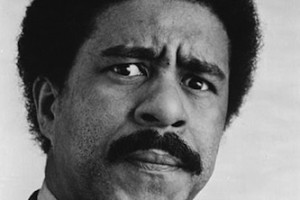 The problem is that Mr. Terrell brings to issues of racial justice all the authority and conviction born of experience that one would expect of a white kid that graduated from the Pembroke Country Day School and Princeton, which is to say, not very much. As the late Richard Pryor said (in a slightly different context); “I can say that because I am one.”
The problem is that Mr. Terrell brings to issues of racial justice all the authority and conviction born of experience that one would expect of a white kid that graduated from the Pembroke Country Day School and Princeton, which is to say, not very much. As the late Richard Pryor said (in a slightly different context); “I can say that because I am one.”
Besides, the reading public, at least here locally, could care less about the preachy aspect of the book, having become inured to being ridiculed as fools and bigots over the last one hundred and fifty years. What we want (like most readers everywhere, if they would only admit it!) is to hear about Rich People Behaving Badly. On this count, Terrell delivers spectacularly, for “The King of Kings County” is a juicy roman a clef. Any number of Kansas City institutions and the town’s prominent people are instantly recognizable.
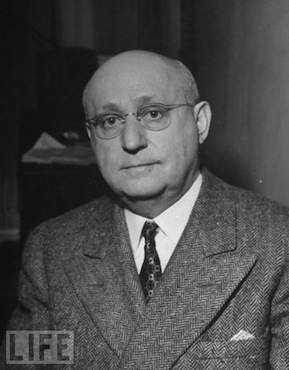 The story is clearly derived from the rise and fall of a Kansas City real estate dynasty, the J.C. Nichols family. If you want to understand the sway that family had over our city, imagine if all the great real estate empires in the New York area – Zeckendorf, Levitt, Lefrak, Trump, Mack, etc. were owned by a single family, with a single individual holding all the control for almost fifty years.
The story is clearly derived from the rise and fall of a Kansas City real estate dynasty, the J.C. Nichols family. If you want to understand the sway that family had over our city, imagine if all the great real estate empires in the New York area – Zeckendorf, Levitt, Lefrak, Trump, Mack, etc. were owned by a single family, with a single individual holding all the control for almost fifty years.
Obviously, any novel based on such a figure, with so much power to effect the community for good or ill, would be of tremendous interest to New Yorkers and so it is with “The King of Kings County” for Kansas Citians.
The McGuffin of the book is quite simple. Henry Bowen, the real life Miller Nichols, and his father Prudential (Didn’t I tell you these people were sexually repressed?) Bowen, otherwise known as Jesse Clyde Nichols, the eponymous founder of the J.C. Nichols Company, Have a Dream.
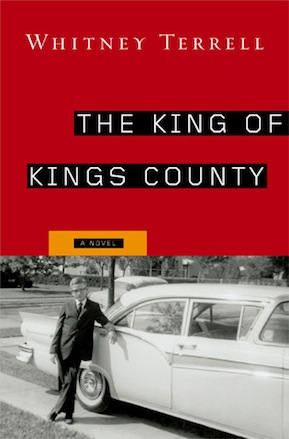 They will use racial block busting to drive middle class white residents out of Kansas City, Missouri. The aim is to get them to flee across the state line to Johnson County, Kansas (the Kings County of the book), where they will buy suburban homes built by the Nichols Company. The Bowen/Nichols family is thereby accused of a trifecta of racism and venality – creating white flight, emptying out the central city, and, finally, reaping a huge profit from the resulting racial polarization and re-segregation.
They will use racial block busting to drive middle class white residents out of Kansas City, Missouri. The aim is to get them to flee across the state line to Johnson County, Kansas (the Kings County of the book), where they will buy suburban homes built by the Nichols Company. The Bowen/Nichols family is thereby accused of a trifecta of racism and venality – creating white flight, emptying out the central city, and, finally, reaping a huge profit from the resulting racial polarization and re-segregation.
The morality play plot line rings false in a number of different respects.
First of all, it is anachronistic in the original sense of the word. The restrictive racial covenants that Terrell blames the Nichols Company for using to create lily white suburban enclaves were struck down by the U.S. Supreme Court in 1948, long before the white flight of the ‘60’s that Nichols is alleged to have engineered.
Moreover, the Nichols Company had its first development in Johnson County in the 1920’s, even further back in time from the white flight that supposedly sparked the development of such suburban areas.
 The migration to Johnson County began in earnest immediately after World War II, with the creation of Prairie Village, Kansas, a suburb built on farmland next to the State Line Road that separates Kansas and Missouri. It was created to provide affordable housing for returning veterans and their families. Although it initially resembled its contemporary, Long Island’s Levittown, this Nichols development has aged gracefully. It is now considered to be one of the more attractive communities in the metropolitan area, with excellent schools, solid property values, and a good socio-economic mix of residents. While no one would confuse Miller Nichols/Henry Bowen with George Soros, it is hard to see much of a racist subtext in such a narrative.
The migration to Johnson County began in earnest immediately after World War II, with the creation of Prairie Village, Kansas, a suburb built on farmland next to the State Line Road that separates Kansas and Missouri. It was created to provide affordable housing for returning veterans and their families. Although it initially resembled its contemporary, Long Island’s Levittown, this Nichols development has aged gracefully. It is now considered to be one of the more attractive communities in the metropolitan area, with excellent schools, solid property values, and a good socio-economic mix of residents. While no one would confuse Miller Nichols/Henry Bowen with George Soros, it is hard to see much of a racist subtext in such a narrative.
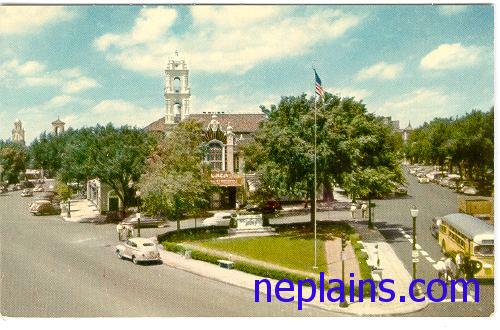 As far as the charge of racial block busting by J.C. Nichols goes, the actual historical record is to the contrary. The Nichols Company and its owners would have fiercely opposed such a practice, if only because it threatened their older holdings on the Missouri side of the state line, especially the carriage trade shopping district known as The Country Club Plaza, spoofed in the novel as “The Campanile”.
As far as the charge of racial block busting by J.C. Nichols goes, the actual historical record is to the contrary. The Nichols Company and its owners would have fiercely opposed such a practice, if only because it threatened their older holdings on the Missouri side of the state line, especially the carriage trade shopping district known as The Country Club Plaza, spoofed in the novel as “The Campanile”.
By letting the story line get subordinated to ideology, Terrell allows both to suffer. For instance, he titles one of the book’s chapters “Patrician Woods,” which is the name of a more recently built Nichols’ subdivision.
By invoking that name, Terrell perfectly captures the slightly defensive pretentiousness that characterizes the mindset of certain circles in Kansas City. At the same time, however, he misses the far more interesting reality that lies behind his caricature of a suburban WASP redoubt.
The actual Patrician Woods is not only not an exclusively WASP enclave, but only marginally white or Christian. The dominant ethnic group there, in fact, seems to be Asian-American doctors, engineers, and other professionals.
The subdivision is also at the very heart of Kansas City’s Jewish community, with Menorah Hospital, the Congregation Beth Torah Synagogue, the Shalom Geriatric Plaza, and the Jewish Community Center within the immediate area. If Patrician Woods represents segregation, it’s a segregation based on education and earning power, not race or ethnicity.
By the same token, the central city, whose abandonment and neglect Terrell places squarely at the feet of the Nichols Company, has undergone an amazing renaissance over the last few years.
The downtown is currently undergoing a huge building boom. The grimy warehouse district south of the downtown has now become a trendy residential area (“The Crossroads”), with numerous loft apartments, hip restaurants, art galleries, etc.
All this is being accomplished with private investment, which must trouble the author greatly since he consistently portrays American business as a giant confidence game; defrauding consumers, investors, and workers alike.
Besides being a sixties cliché, this attitude causes Terrell to undermine his own message. For instance, he has one of the novel’s characters (like Terrell’s own father, a Nichols/Bowen real estate agent), repeatedly hold up a notorious 19th century swindler as a role model for his young son to emulate.
The robber baron in question, Thomas Durant, is alleged to have built his Union Pacific’s tracks through Iowa in a serpentine fashion in order to maximize a government subsidy which rewarded him for miles of track built.
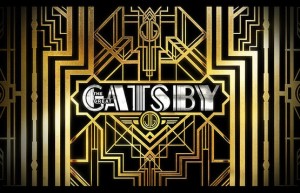 The incident is strongly reminiscent of a scene in F. Scott Fitzgerald’s “Great Gatsby” in which Henry Gatz says that his son, “Jay Gatsby,” nee Jimmie Gatz, had he lived, could have become a great American who “built up the country,” like the infamous James J. Hill, another Gilded Age buccaneer. As my kids used to tell me; “Been there, done that!”
The incident is strongly reminiscent of a scene in F. Scott Fitzgerald’s “Great Gatsby” in which Henry Gatz says that his son, “Jay Gatsby,” nee Jimmie Gatz, had he lived, could have become a great American who “built up the country,” like the infamous James J. Hill, another Gilded Age buccaneer. As my kids used to tell me; “Been there, done that!”
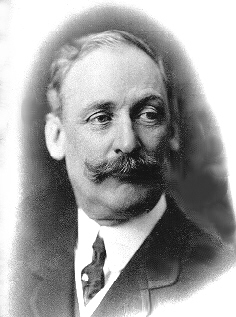 The author not only thus resorts to heavy-handed irony, derivative at that, but misses an opportunity to introduce a far more interesting figure, Arthur Stilwell.
The author not only thus resorts to heavy-handed irony, derivative at that, but misses an opportunity to introduce a far more interesting figure, Arthur Stilwell.
Stillwell was an actual turn of the century mogul who, unlike Durant, had a substantial and lasting impact on Kansas City. Stillwell, the founder of two major railroads, was also a mystic who believed in the occult and a visionary whose design for the economic future was one hundred years before its time.
Stillwell conceived a century ago of NAFTA and a free trade zone with Mexico. He pushed through a transcontinental rail link to make it a reality, only to be thwarted on the brink of completion by the founder of yet another Kansas City financial dynasty whose progeny are still very much with us.
Stillwell is so much more fascinating a character to be invoked, a tragic hero with a grand vision brought low by real life villains, than Terrell’s cardboard Durant, that one’s sense is of regret, of a chance lost to breathe life into a forgotten local legend.
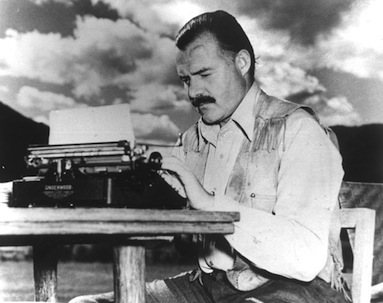 Such missteps can be attributed as much to the author’s youth as anything else. It is largely redeemed by a lean yet elegant prose style that does wonders with the simple declarative sentence, not unlike another Kansas City trained writer, a former reporter for the Kansas City Star, one Ernest Hemingway.
Such missteps can be attributed as much to the author’s youth as anything else. It is largely redeemed by a lean yet elegant prose style that does wonders with the simple declarative sentence, not unlike another Kansas City trained writer, a former reporter for the Kansas City Star, one Ernest Hemingway.
Terrell’s ability to evoke a sense of place is unmatched. His world is largely my own and while his perspective is decidedly different than mine, he captures its look and feel with almost photographic realism. In particular, his depiction of life fifty years ago at a local boys prep school is dead-on. It has to rank with such classic tales of adolescent male savagery as William Golding’s “Lord of the Flies” and the English public school chronicles of Orwell, Connally, and Waugh.
The good news is that The Talented Mr. Terrell has extraordinary talent indeed. Once he checks his facile leftism at the door, I predict a long and prosperous career in American fiction for him. We will all be the richer for it, not just those who catch the Proustian allusions to our city’s jeunesse doreé.



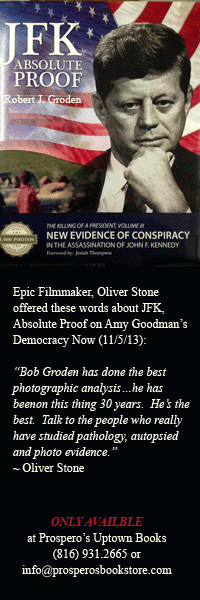
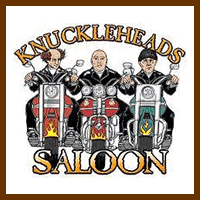


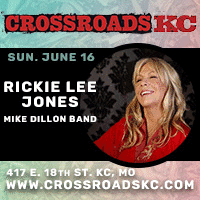


Do not injest a gram of cocaine before bedtime!
Well done! Thank you for showing both a writer’s and gentleman’s respect for the English language. Shades of the late JME.
No mention of the Glazer Dynasty in this book? As the other resident linguist would say, “Quelle horreur!”
I don’t know if I will read the book, but I will read the review again. Nice!
What the hell was in the briefcase in “Pulp Fiction”?
http://www.straightdope.com/columns/read/1784/whats-in-the-briefcase-in-em-pulp-fiction-em
What a GREAT read! Thanks once again!
I hope Hearne meant for the title of this entry (Everything’s Up to Date in KC) to be ironic.
You do realize the book you are reviewing was published EIGHT years ago, don’t you? Way to stick with it and get it finished despite all the big words.
Also, please explain how Whitney’s background as an affluent, privileged white kid makes his perspective on Kansas City and race any more flawed than yours? Please explain how your own privileged, affluent upbringing has provided keen insights into black-white relations.
Grrrrr….
Go get ’em, Tiger. Nice smackdown – except you seem to have missed the Richard Pryor line.
In the last two weeks I’ve read reviews of Ford Madox Ford’s “Parade’s End”(published in 1926),Kurt Vonnegut’s “Slaughterhouse Five”(published in 1969),and Leo Tolstoy’s “Anna Karenina'(published in 1875). I never felt that a review was wasted if it helped a reader understand and appreciate a book,regardless of when the book was first published. I hope my review will cause people to read Mr. Terrell’s works,particularly if they missed them when they first came out. On your second point,it’s precisely because I share Mr.Terrell’s own background that I would NOT presume to posture about something as sensitive as race or claim to have any particularly worthy insights on the subject,let alone keen insights. I think a little less anger is in order on all sides,particularly since we are all in the same boat.i.e. part of a great,diverse,and ultimately fascinating community. As a jazz great once opined on this very point;”It’s a cracker town,but a happy town!”
By calling into question Terrell’s views on race and KC (and assuming that the positions taken by his fictional characters are the author’s own views), you have staked out an opposing position without any knowledge about the amount of research Terrell did beyond insinuating that they were formed exclusively at childhood dinner table conversations or chats on the tennis courts at Pembroke…, so, yes, you are posturing about it.
Still, we all appreciate your benevolent attitude–“Tut, tut…why are the people we are oppressing so terribly angry?”
Because of the tragic legacy of slavery, the most explosive and damning thing you can charge someone with is being a racist. I’m not accusing anyone of racism. On the contrary, I think we need to be very careful in attributing it as a motive,especially if it’s contrary to the factual record. I had my differences(legal and political) with Miller Nichols but I did have enough respect for him that fair is fair.(One observer,a seasoned real estate developer himself,said Whitney’s charges were unfair because Nichols wasn’t smart enough to pull off the nefarious scheme the book charges him with. I’ll leave that one alone on the theory of “De mortuis,nulli nisi bonum”.) The anger I referred to was not between the races but between ideologues on both sides of the political divide.